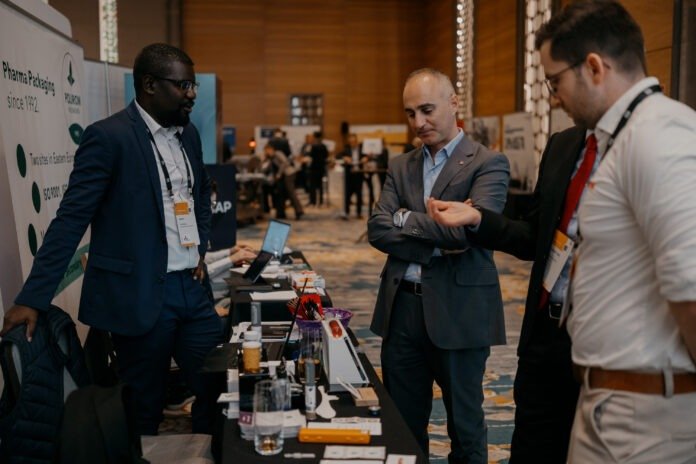For decades, pharmaceutical packaging had one primary goal: protect the product from the damage. The focus was on sterility, stability and regulatory compliance. The comfort of end-users was often overlooked, leading to medical packaging to be reported as confusing and resulting in negative consequences. Based on figures provided by the Institute of Safe Medication Practices, it has been estimated that as many as 10,000 patients each year are affected by labelling and packaging related issues. This learning has been a powerful catalyst, and now the industry expands its definition of ‘safety’ to include not just the integrity of the product, but also its clarity and usability for everyone involved.
This shift marks the move from a product-centric to a patient-centric model, placing the packaging at the forefront of the evolution. Accessible, intuitive and supportive medication design is a critical component of long-term commercial success, brand loyalty and, most importantly, positive patient outcomes. Today, the patient–centric packaging market is predicted to reach hundreds of millions in revenue growth between 2025 and 2034. This transformation becomes an important topic of discussion among industry professionals at pharmaceutical events, like PHARMAP 2026, where companies are highlighting the strategies and innovations shaping the future of patient care.
Meeting The Needs of Elderly Patients
The global world population is growing older: the UN predicts that by 2050 around 426 million of people will be over 80. This number is three times greater than that of 2019. With an increase in age, appears certain difficulties for pharmaceutical packaging design as the health of elderly is gradually affected with a decline of motor functions, cognition and sensory acuity. This increases risks of medical errors and adherence, which is observed in problems with swallowing and handling the drug products. Despite this fact, the aging patients were not generally included into clinical studies for marketing authorisation of medicines. To overcome this, European Medicines Agency released the guideline “ICH E7–studies in support of special populations: geriatrics”, in which it was stated that there is a need to recruit people older than 65 into clinical studies.
Packaging modifications can increase the adherence up to 25% among seniors, studies show. To help the elderly patients, the use of multi-compartment design was proven to be effective in improving the clinical outcomes. This approach organises the medicines to be taken in the specific period of the day, thus reducing the risk of errors. The graphical aspects of packaging should be comprehensive to a patient: the preference lies in not coloured standard fonts, high dark/light contrast and point sizes higher than 12.
The packaging principles here ought to focus on simplified opening mechanisms. Companies are incorporating large gripping surfaces and opening mechanisms that require less force. Romaco, a global manufacturer of packing and process technology, has developed Push Packs for patients losing their muscular strength and vision, a large portion of which are seniors. It combines the barrier properties of strip packaging with the opening mechanism for blisters, making it easy to push the tablets out of the foil. By minimising the physical effort needed, Push Packs effectively make medication management more accessible for elderly patients.
Overcoming Literacy Barriers With Packaging
Another challenge for the packaging market presents the portion of the low-literacy population. According to UNESCO, nearly 800 million adults globally lack basic literacy skills. As a result, they experience longer hospitalisation and more frequent need for emergency care. Health materials are often written for 10-th grade reading level, but according to the National Center for Education Statistics, the reading ability of people with low health literacy can be below the 5th-grade level.
A way to address this knowledge gap is the use of pictograms. According to the University of Texas, there were 11 studies carried out that used pictures for individuals with limited literacy, ten of which showed positive effect in the increase of understanding health materials. So, illustrations, such as a sun for morning or a bed for nighttime use, help to support such patients.
This solution is already being implemented in various cases. For example, The Dutch Medicines Evaluation Board has formed a set of pictograms for a low-literacy population. According to their statement, the pictures will be rolled out in webshops, visible on the pharmacy shelves and printed on medications packaging.
PHARMAP 2026: Uniting Industry for Patient-Centric Solutions
Although, specific measures are being taken in patient-centric designs. There is still very little research and actions carried out. To change that, pharma companies come together at industry events to discuss strategies and solutions. One of such platforms is Pharmaceutical Manufacturing and Packaging Congress 2026 set on 20-21 April in Amsterdam, the Netherlands. The event gathers 350+ industry professionals, from big pharma leaders to service providers, for fostering a dialogue that can move the pharmaceuticals forward. The partnerships formed at the Congress serve as a catalyst for combined efforts in producing and implementing patient-centric packaging.
The participants have an opportunity to learn more on the topic by taking part in a dedicated roundtable. The themes include packaging quality, the relationship with authoritative rules, packaging for elderly, low-literacy and chronic patients, as well as the use of digitalisation in interfaces. One of the speakers, Karel van der Waarde, who is a researcher at Lucerne University of Applied Sciences and Arts, delves into the theme of information about medicines for patients and caregivers. He is going to address an important question: is the pharmaceutical industry providing relevant labels for their treatments? This is followed by a discussion between the speakers and the audience, providing more insights into the topic.
This is not the only theme the Congress is covering: PHARMAP 2026 delves into outsourcing, contract manufacturing, creating safe and functional packaging, sustainability, digitalisation, optimisation of supply chain and manufacturing, as well as serialisation and anti-counterfeiting. The combination of these aspects creates an ecosystem, which makes the implementation of patient-centricity easier and more effective.
Charting the Course to Inclusive Pharmaceutical Packaging
The journey from a one-size-fits-all model to a patient-centric packaging is well underway, but it is far from complete. As the industry confronts the real challenges of an aging global population and widespread low literacy, it becomes clear that design is a key component of patient safety and adherence. Innovation focused platforms, like the upcoming Pharmaceutical Manufacturing and Packaging Congress 2026, are essential drivers for this change. By continuing to unite manufacturers, packaging experts and regulators in this crucial conversation, pharmaceutics can ensure that the future is not only smarter and more intuitive but also more inclusive – transforming every package from a mere container into a reliable partner in the patient’s health journey.


